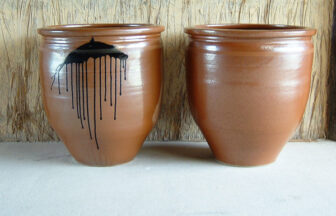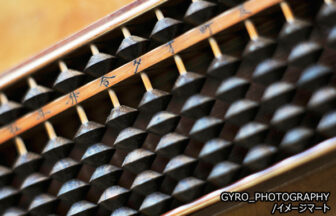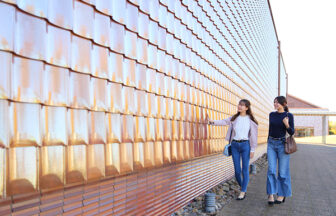Production Area
Yasugi City / Unnan City / Okuizumo Town / etc., Shimane Prefecture
Historical Details and Geographic Characteristics
In the mountainous regions of eastern Shimane Prefecture (the Izumo region), the development of Japanese ironwork known as tatara iron began. In addition to charcoal, the process used high-quality iron sand with very few impurities, which was taken from magnetite-containing granite. The production of Japanese iron became the primary industry supporting the Matsue Domain during the Edo period, and due to the high quality, around 50 percent of iron production occurred in Shimane Prefecture by the early Meiji period.
With the expansion of modern western iron production, tatara iron making weakened and came to a halt during the Taisho period; however, in 1977, The Society for Preservation of Japanese Art Swords rejuvenated the tatara industry in Oro, Okuizumo, and thereby provided the raw materials for Japanese swords around Japan. The Tanabe family of Yoshida in Unnan City, one of three families of the Izumo region and heirs to the tradition dating back to the Muromachi period, also launched the “Tatara no Sato” project in 2018, which also helped revitalize tatara manufacturing. The idea was to create an area for the development of new tatara products which combined ancient techniques with modern-day skills.
Also, the Okuizumo Tatara Brand Promotion Council was established in 2016 in Okuizumo, and areas searching to receive approval to produce new products propelled the industry. From this, decorative swords, kitchen knives, knives, accessories, and others using the tatara production methods continued to be developed.
Main Retailer/Affiliated Museums・Exhibition Facilities
Wakou Museum
| Address | 1058 Yasugicho, Yasugi City, Shimane Prefecture |
|---|---|
| Phone | 0854-23-2500 |
| Hours of Operation | 9:00 a.m. – 5:00 p.m. |
| Closed | Wednesdays (If the Wednesday falls on a holiday, the museum will close the following day), Year-end/New Year holidays |
| Admission Fee | Adults: 310 yen, High School Students: 210 yen, Middle School Students: Free |
| URL | http://www.wakou-museum.gr.jp/ |
| Social Media | https://www.facebook.com/pages/%E5%92%8C%E9%8B%BC%E5%8D%9A%E7%89%A9%E9%A4%A8/230438707015663/ |
Historical Museum of Iron
| Address | 2533 Yoshida, Yoshidacho, Unnan City, Shimane Prefecture |
|---|---|
| Phone | 0854-74-0043 |
| Hours of Operation | 9:00 a.m. – 5:00 p.m. |
| Closed | Mondays (If the Monday falls on a holiday, the museum will close the following day) |
| Admission Fee | Adults: 520 yen, Elementary – Junior High School Students: 260 yen |
| URL | http://www.tetsunorekishimura.or.jp/ |
The Itohara Memorial
| Address | 856-18 Otani, Okuizumo Town, Shimane Prefecture |
|---|---|
| Phone | 0854-52-0151 |
| Hours of Operation | 9:00 a.m. – 5:00 p.m. |
| Closed | Wednesdays, Year-end/New Year holidays |
| Admission Fee | Adults: 650 yen, High School / College Students: 450 yen, Elementary / Middle School Students: 250 yen |
| URL | http://itoharas.com/ |
| Social Media | https://www.facebook.com/itoharas/ |
Kabeya Shuseikan Museum
| Address | 1655 Kamiai, Okuizumo Town, Shimane Prefecture |
|---|---|
| Phone | 0854-56-0800 |
| Hours of Operation | 9:00 a.m. – 4:30 p.m. |
| Closed | Mondays (If the Monday falls on a holiday, the museum will close the following day), mid-December to mid-March |
| Admission Fee | Adults: 700 yen, High School / College Students: 400 yen, Elementary / Middle School Students: 400 yen |
| URL | http://kabeya-syuseikan.com/ |
| Social Media | https://www.facebook.com/kabeyasyuseikan/ |












